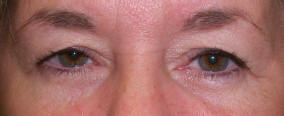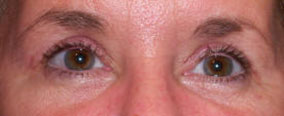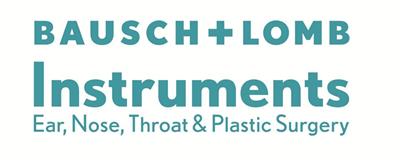Blepharoplasty
What is Blepharoplasty?
- Your eyes including your eyelids, are perhaps one of the initially things people notice in you. This makes your eyes and eyelids one of the most important components for an appealing facial expression and aesthetic appearance. Any visible change in the shape or size of the orbital or periorbital region can spoil the look of your face.
- As you age and grow older, your eyelids might possibly become ‘droopy’ or ‘baggy’ due to the stretching of your eyelid skin and gradually decreasing tone of your eyelid muscles. Your droopy eyelids and brow together cut a sorry figure for your face making you look tired, sleepy and haggard, further leading to eyelid or brow straining or both. In extreme cases, your saggy, baggy eyelids can even obstruct your vision, particularly peripheral vision causing difficulty in reading or driving.
- Blepharoplasty ensures cosmetic or functional corrections to the area around your eyes to beautify your look or to correct any abnormalities in function.
Defining Blepharoplasty
- The term blepharoplasty is derived from the Greek ‘blepharon’ which means ‘eyelid’ and ‘plassein’ which means ‘to form’. Simply put, blepharoplasty is a plastic surgical procedure that is used for correcting defects, deformities, and disfigurations of the eyelids, and more recently, it has been used for achieving aesthetic modification of the periorbital region of the face.
- Blepharoplasty is sometimes erroneously referred to as an ‘eyelift’ or “eyelid lift” as the procedure does not involve lifting of the eye or eyelids in any manner. It might possibly be done to achieve either functional or cosmetic ends or a combination of both.
- Blepharoplasty involves removal or repositioning of excess tissue as well as reinforcement of surrounding muscles and tendons to reshape the upper eyelid, lower eyelid or both.
What are the Goals of Blepharoplasty?
- The objective of blepharoplasty include the functional restoration of affected eyelids and aesthetic restoration of the orbital and periorbital regions of the face.
- This is done by removing excess skin from the eyelids, smoothing the underlying eye muscles, tightening the supporting structures, and resecting and re-draping excess fat of the retroseptal area of the eye thus achieving a smooth anatomic transition from the lower eyelid to the cheek.
What are the Types of Blepharoplasty?
Based on desired results, blepharoplasty can be done either for functional or cosmetic purposes.
Functional or Reconstructive Blepharoplasty: This is performed to restore vision by removing excess skin, muscle and fat which blocks the visual axis. Following are the three essential elements of a functional blepharoplasty:
- Patient should have noticeable visual improvement after skin elevation off their eyelids.
- A visual field test is done to document the loss of the superior field of vision.
- Photographs should clearly show upper eyelid skin laying across the eyelashes.
Cosmetic Blepharoplasty: The goal of cosmetic blepharoplasty is to accentuate the appearance of the eyes at the patient’s request and is not done to improve vision.
Anatomically, blepharoplasty can be performed on either the UPPER or LOWER eyelids, or BOTH eyelids.
Upper eyelid Blepharoplasty ("eye lift")
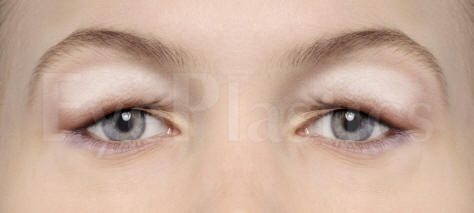
- Incisions made on the outside of the upper eyelids are barely visible and fade over time.
- The excess fat is removed through incisions which are finally closed with fine sutures such that it forms an eyelid crease.
- It assists in the reduction of excess skin and fat in the upper eyelids.
Before and After Slider Animatition of Upper Blepharoplasty
Before and After Patient Photographs
Lower Eyelid Blepharoplasty

- Lower eyelid blepharoplasty is almost always done for cosmetic reasons - to improve puffy lower eyelid "bags" or to reduce wrinkling of skin.
- This is done either through a skin incision, called trans-cutaneous approach or through the inner aspect of the eyelid, called trans-conjunctival approach.
- Incisions made on the inside of the eyelids in the trans-conjunctival approach are not visible.
- Lower Eyelid Blepharoplasty reduces excess fat from within the lower eyelids through incisions which are then closed with fine sutures.
Combined Upper and Lower Blepharoplasty
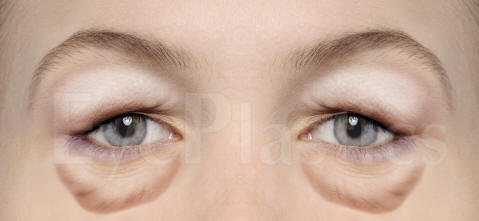
- This involves removal of excess skin and fat in both the upper as well as lower eyelids with smoothing of the muscle and other tissues.
- The excess skin and fat are removed through incisions which are finally closed with fine sutures resulting in a fine scar that forms an eyelid crease.
- Incisions made on the inside of the eyelids in the trans-conjunctival approach are not visible and usually preferred.
- Incisions made on the outside of the lower eyelids are barely visible and fade over time. They might possibly be chosen in cases that require the sculpting of additional eyelid creases.
- They might possibly be done in conjunction with other procedures such as a facelift.
Who is ideal candidate for blepharoplasty surgery?
Blepharoplasty is not recommended for all. It is performed exclusively to remove under-eye bags, correct puffy upper eyelids, and to restore vision obscured by excess skin and fat in the eyelids.
- The ideal candidates for blepharoplasty include:
- Those with puffy upper eyelids looking for an aesthetic upgrade
- Those with old, tired-looking eyes looking for a younger look
- Those with excess upper eyelid skin obstructing vision for functional improvement
- The patient should be at least 18 years of age
- The patient should have a healthy mind and body
- A patient with realistic expectations of the final outcome
Does insurance pay for Blepharoplasty: what is the difference between functional or Cosemtic Blepharoplasty
Blepharoplasty can be both a functional and cosmetic surgical procedure intended to reshape the upper eyelid or lower eyelid by the removal or repositioning of excess tissue as well as by reinforcement of surrounding muscles and tendons.
- Eyelids (and your eyes) are, perhaps, what other people notice initially.
- Eyelid surgery to improve the appearance of the eyelids is often called 'eyelift' or 'blepharoplasty'.
- As we age, your eyelids (both upper and lower) might possibly become 'droopy' or 'baggy'. The eyelid skin stretches and muscle tone weakens
- In adds to, your eyebrows might possibly also droop.
- Your droopy upper eyelids and droopy brows might possibly give you the appearance of being sleepy, tired and aging prematurely
- In adds to, this sagging, might possibly lead to brow/eyelid strain
- Excess skin can hang over the eyelid and interfere with vision
When an advanced amount of upper eyelid skin is present, the skin might possibly protrude over the eyelashes and causing a loss of peripheral vision. The outer and upper parts of the visual field are most commonly affected and the condition might possibly cause difficulty with activities such as driving or reading. In this circumstance, upper eyelid blepharoplasty is performed to improve peripheral vision.
- Patients with a less severe amount of excess skin might possibly have a similar procedure performed for cosmetic reasons.
- Lower eyelid blepharoplasty is almost always done for cosmetic reasons, to improve puffy lower eyelid "bags" and reduce the wrinkling of skin.
What can you expect after a Blepharoplasty or Eyelift Surgery?
- The long term results of blepharoplasty can be utterly fulfilling and generally lasts for years together. For those lucky few who have reported a permanent improvement in their facial features, it is a bonus to have a lifetime of youthfulness in their eyes.
- However, you ought to be realistic in your expectations of the surgery. It might possibly provide your face a dramatic overhaul, but be warned that complications could ruin not just the procedure but your face as well. Also, your eyelids and eyes will witness a number of changes during the recovery period, right from redness and swelling of the eyelids to blurred vision and discomfort which resolve with time.
- Set realistic expectations and discuss every issue with your surgeon before undergoing surgery.
.jpg)
